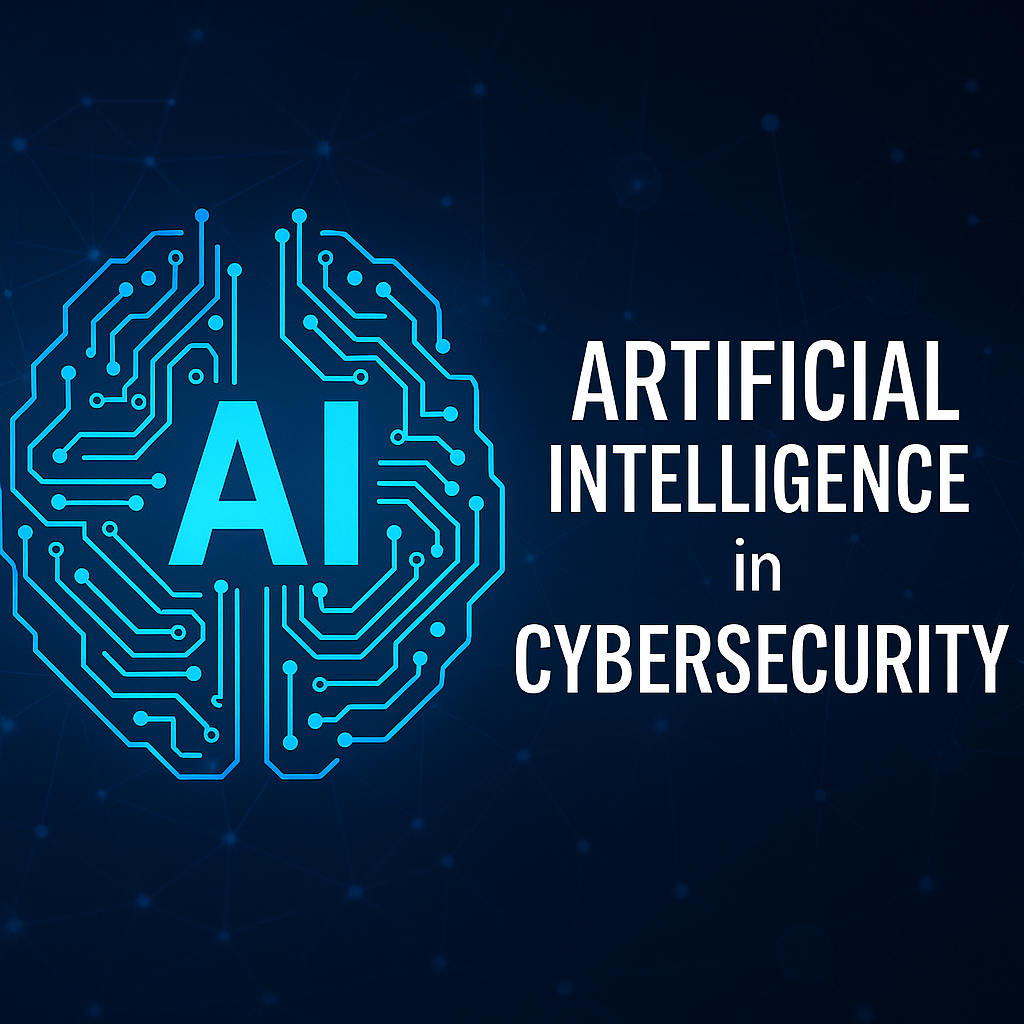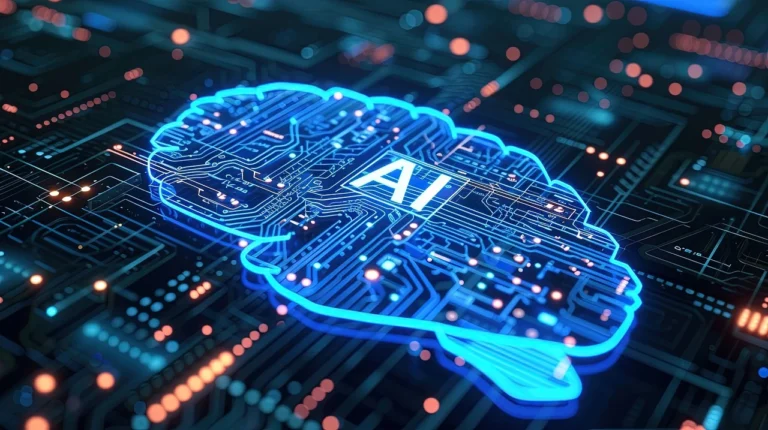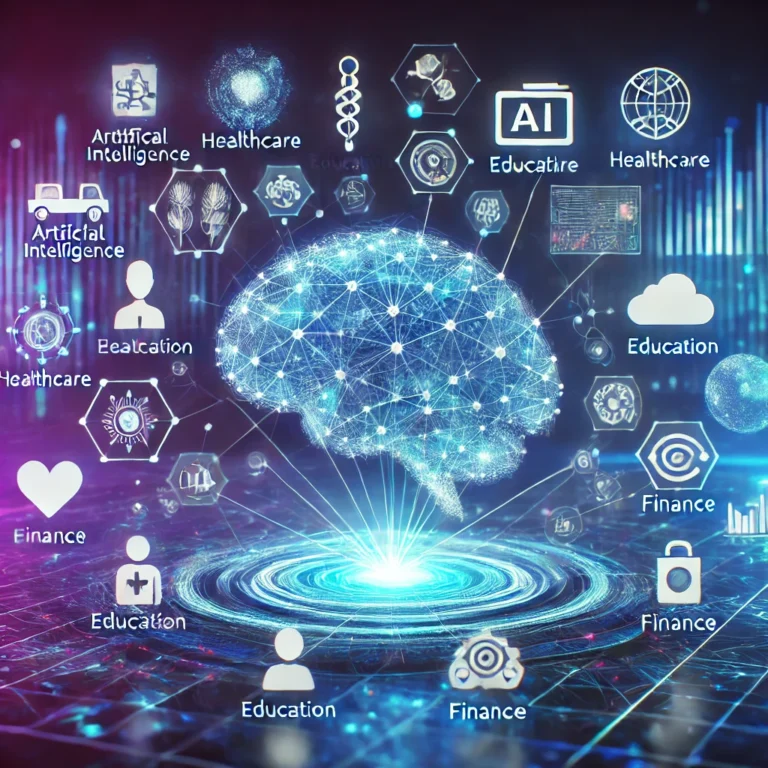The Role of Artificial Intelligence in Cybersecurity: Revolutionizing Digital Defense
Artificial Intelligence in Cybersecurity: Revolutionizing Digital Defense
In today’s interconnected world, cybersecurity is no longer just an IT issue; it is a fundamental pillar of global business operations, national security, and personal privacy. As digital transformation accelerates across every industry, so too do cyber threats in scale, complexity, and frequency. In response, organizations and governments are turning to Artificial Intelligence (AI) to help secure their digital assets and infrastructure.
AI in cybersecurity isn’t just a trend or buzzword—it represents a fundamental shift in how threats are identified, managed, and neutralized. Unlike traditional systems that rely heavily on static rules and predefined signatures, AI systems learn and evolve, becoming more accurate and efficient over time. By using machine learning algorithms, natural language processing, deep learning, and neural networks, AI is ushering in a new era of smart cybersecurity.
This article explores the multifaceted role of Artificial Intelligence in cybersecurity. We’ll examine how AI is used to detect and prevent attacks, enhance threat intelligence, automate responses, and support security teams. We’ll also explore the challenges and ethical concerns of integrating AI into cybersecurity infrastructures. By the end of this discussion, it will become clear that the future of cybersecurity is inseparable from AI innovation.
The Evolution of Cyber Threats
Cybersecurity has changed dramatically over the past two decades. In the early days, viruses were relatively simple and mostly spread through floppy disks or early email systems. Antivirus software used signature-based detection, which meant it could only recognize known threats that matched a predefined pattern. This approach worked for a while, but it had a major limitation: it couldn’t detect new or unknown threats until they were manually analyzed and cataloged.
As the internet grew, so did cyber threats. Phishing, ransomware, spyware, and botnets became common. Cybercriminals began using sophisticated tactics to bypass traditional defenses. Today, attackers use polymorphic malware that changes its code with each infection, and advanced persistent threats (APTs) that infiltrate systems over extended periods. Attack vectors now include everything from smart TVs and smartphones to cloud-based applications and industrial control systems.

With this ever-evolving threat landscape, human analysts and traditional tools are struggling to keep up. This is where Artificial Intelligence makes a transformative impact.
How AI Enhances Threat Detection
One of the most powerful applications of AI in cybersecurity is threat detection. AI systems can analyze enormous volumes of data in real-time to identify unusual patterns, behaviors, or anomalies that may signal an attack.
For example, machine learning algorithms can be trained on datasets of normal network behavior. Once trained, these systems can instantly flag deviations from the norm, such as unusual login times, unexpected data transfers, or unfamiliar IP addresses. Unlike traditional systems that rely solely on known threats, AI can detect zero-day attacks and previously unseen malware.
Natural language processing (NLP) also plays a key role. NLP allows AI to read and interpret vast amounts of unstructured data, such as threat intelligence reports, hacker forums, or news feeds. By digesting this information, AI can forecast emerging threats and help security teams stay ahead of attackers.
Behavioral analytics is another area where AI shines. Instead of relying on signatures, AI monitors how users typically interact with systems and applications. When a user behaves in a way that deviates significantly from their norm—for example, accessing large databases at odd hours—the AI can issue an alert or automatically lock down access until the activity is reviewed.
Automation of Cyber Defense Operations
AI doesn’t just identify threats; it also helps respond to them more quickly and efficiently. Security teams often face an overwhelming number of alerts, many of which are false positives. This creates alert fatigue, where genuine threats may be overlooked due to sheer volume.
AI helps filter out noise and prioritize threats based on severity and context. For instance, an AI system might determine that an attempted login from a blacklisted country is a higher priority than a failed internal password reset. By correlating data from multiple sources, AI provides a more accurate picture of what’s happening and what needs immediate attention.
Some organizations are even using AI to power Security Orchestration, Automation, and Response (SOAR) platforms. These systems can automatically contain attacks by isolating affected systems, blocking malicious IPs, and initiating incident response protocols without human intervention. In a field where every second counts, AI-driven automation significantly reduces response time and minimizes potential damage.
AI in Malware Analysis and Prevention
Malware analysis traditionally involves reverse-engineering malicious software to understand how it behaves. This is a time-consuming and highly specialized task. AI streamlines this process by using deep learning models to identify malicious code based on its characteristics rather than its exact structure.
This capability is especially useful against polymorphic malware, which can generate endless variants to evade traditional antivirus programs. AI can detect these variants by identifying behavioral patterns rather than exact matches. In effect, AI-based systems act like an intelligent immune system, identifying and neutralizing threats based on how they act rather than how they look.
AI also plays a critical role in endpoint security. Modern endpoint protection platforms (EPPs) use AI to monitor individual devices for unusual activity. When paired with Endpoint Detection and Response (EDR) systems, AI helps detect and contain breaches that originate on user devices, such as phishing-induced credential theft or insider threats.
AI and Threat Intelligence
Threat intelligence is the process of gathering and analyzing information about current and potential cyber threats. This includes everything from malware signatures and hacker techniques to geopolitical developments that may influence state-sponsored attacks.
AI enhances this process by automating data collection and analysis. Instead of manually combing through logs, reports, and databases, AI tools can aggregate data from multiple sources, identify relevant patterns, and generate actionable insights.
For instance, AI systems can monitor hacker forums on the dark web to detect chatter about new vulnerabilities or exploits. They can also scan academic papers, GitHub repositories, and software patches to identify risks in open-source software. This real-time intelligence helps organizations stay a step ahead of attackers.

The Human-AI Collaboration
While AI is incredibly powerful, it isn’t a silver bullet. Human expertise remains essential in cybersecurity. AI can process data and recognize patterns far beyond human capability, but it lacks the nuanced judgment and strategic thinking that experienced security professionals provide.
The most effective cybersecurity strategies involve human-AI collaboration. AI handles the heavy lifting of data analysis and routine tasks, allowing human analysts to focus on complex decision-making, threat hunting, and policy development. This partnership enhances productivity, reduces burnout, and ensures more comprehensive security coverage.
Moreover, as AI systems become more autonomous, ethical oversight becomes increasingly important. Security teams must ensure that AI decisions are transparent, explainable, and aligned with organizational policies and legal standards.
Challenges and Ethical Concerns
Despite its many benefits, AI in cybersecurity also presents challenges. One major issue is adversarial AI—where attackers use AI techniques to trick or overwhelm defensive systems. For example, attackers can use AI to create deepfake content or generate phishing emails that are almost indistinguishable from genuine communications.
Another concern is data privacy. AI systems require vast amounts of data to function effectively. Organizations must be careful to collect, store, and use this data responsibly. Mismanagement can lead to compliance violations and loss of public trust.
There are also concerns about algorithmic bias. If AI is trained on biased data, it may produce inaccurate or unfair results. In cybersecurity, this could mean disproportionately flagging certain types of behavior or users. Transparency and accountability are crucial when deploying AI-based systems.
Finally, there is the risk of over-reliance. AI is a powerful tool, but it isn’t infallible. Organizations must maintain robust manual processes and ensure that security professionals are continually trained and updated.
Looking Ahead: The Future of AI in Cybersecurity
The future of cybersecurity is undeniably tied to the development of Artificial Intelligence. As cyber threats continue to grow in scale and sophistication, AI will play an increasingly central role in protecting critical systems and data.
Emerging technologies like quantum computing, edge AI, and federated learning will further expand the capabilities of AI in cybersecurity. For example, quantum-resistant algorithms will be necessary to defend against future quantum-enabled attacks. Federated learning can enable AI to train across decentralized data sources without compromising privacy.
AI will also helFinal Thoughts: A Smarter Defense for a Digital Future
Artificial Intelligence is not just an upgrade to existing cybersecurity practices—it’s a revolutionary force. While it cannot replace human expertise, it augments and enhances our ability to fight cybercrime at scale and speed. As AI continues to learn and evolve, it will form the backbone of resilient, responsive, and intelligent cybersecurity systems that are ready for the challenges of tomorrow.
Building Trust in AI-Powered Security
Trust in AI begins with transparency. Organizations must clearly communicate how AI tools make decisions and how data is used. This transparency builds user confidence, which is crucial in an age where privacy and ethical concerns are top of mind.
The Road Ahead
The future of cybersecurity is undoubtedly intertwined with AI. But success requires collaboration across industries, governments, and technology providers. Investments in education, ethical AI development, and global standards will ensure that this powerful technology is used for the greater good.
As cyber threats grow more sophisticated, so too must our defenses. Artificial Intelligence equips us with the tools to build smarter, faster, and more proactive security systems. It’s no longer a matter of if organizations should adopt AI in cybersecurity—it’s a matter of how quickly they can do so.p address the growing cybersecurity skills gap. As demand for security professionals outpaces supply, AI can help fill the void by automating routine tasks and providing decision support for less experienced analysts.

Call to Action
For those interested in how technology continues to reshape our digital world, readers also visit Cybersecurity Innovations.
As Artificial Intelligence continues to revolutionize cybersecurity, staying informed about cutting-edge solutions is crucial. Industry leaders are leveraging AI in powerful ways. For instance, IBM Security integrates AI through its Watson platform to accelerate threat detection and response. CrowdStrike uses AI in its Falcon platform for real-time endpoint protection and threat intelligence. Similarly, Darktrace employs self-learning AI models to detect and neutralize threats autonomously. Microsoft Sentinel offers AI-enhanced security analytics through its cloud-native SIEM platform. These platforms showcase how AI is transforming cybersecurity into a proactive, adaptive, and intelligent defense system.





